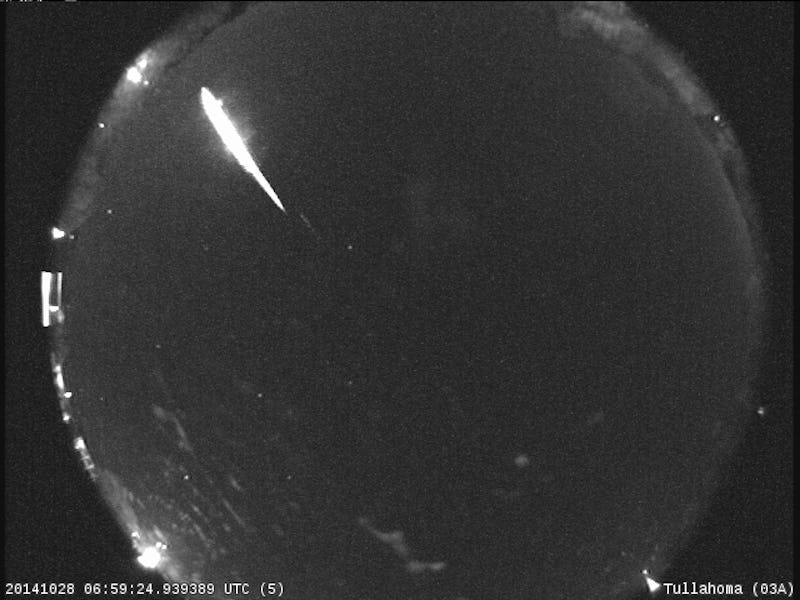You need to see the Northern Taurid meteor shower light up the skies this week
Fireballs will streak across the sky.

CELESTIAL OBJECTS COME AND GO FROM OUR VIEW IN THE NIGHT SKY, as they fling by or orbit around the Sun. Whether it be the Full Moon, a meteor shower, or just the best night to see Mars, we're here to direct your eyes skyward and appreciate the wonders of space from Earth.
This week, we're asking you to marvel at the beauty of the annual Northern Taurid meteor shower, which will peak over the nights of November 11-12, with its mesmerizing fireballs.
Meteor showers are actually the broken off bits that fall from comets and asteroids as they whiz by Earth. These rocky bodies are composed of frozen gas, dust, and other material, some of which dates back to the formation of the Solar System. As these space rocks travel closer to the Sun, the star's powerful gravitational pull can weaken them, breaking them apart as they draw near.
The dust stream forms a kind of train, and the Earth passes through these trains every year as it orbits around the Sun. Some of that dust interacts with Earth's atmosphere and disintegrates — forming the fiery streaks that we observe in the sky and call meteor showers.
Every year, the Earth's orbit crosses the path of a stream of of debris left behind by Comet Encke. The dusty remains hit the Earth’s atmosphere at 65,000 mph and burn up, creating a spectacular show in our night skies: The Northern Taurid meteor shower.
The Taurid meteor shower will light up the night skies this week with its fiery streaks.
This meteor shower lasts through the months of September, October and November, but the shower ramps up activity during the last week of October and the first two weeks of November.
This year, the shower will peak on the night of November 11, and continue through the next night. The meteor shower generally lasts for a few hours each night, beginning at midnight, according to EarthSky.
Although it is not the most abundant meteor shower, the Northern Taurid shower is known for its fireballs, or extremely bright meteors that streak across the night sky. During its peak, the Northern Taurid meteor shower can produce around five fireballs an hour.
A bright Taurid fireball recorded by the NASA All Sky Fireball Network station in Cartersville, Georgia in 2013. The bright orb is the Moon.
The best time to begin viewing the Northern Taurid meteor shower is after midnight, when the constellation Taurus is high above in the sky. And they can be seen from anywhere around the world.
If you live in a crowded city like New York, it is best to get as high up as possible in order to minimize light pollution. You might want to try to view the Northern Taurids from a balcony or rooftop.
You also want to limit any light coming from screens of electronic devices or flashlights, and allow your eyes to get accustomed to the darkness for around 30 minutes before you look up.
This article was originally published on